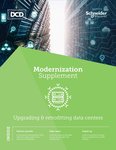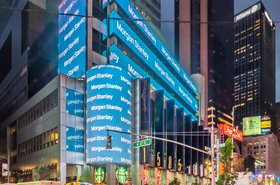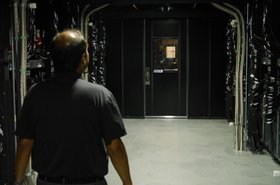When it comes to the end of life and decommissioning of a data center, the focus often turns to IT Asset Disposal (ITAD) and what to do with IT hardware.
This is important; there are numerous compliance requirements around IT hardware containing sensitive information, and the equipment contains rare, valuable, and toxic materials that need to be reclaimed, recycled, and safely disposed of.
But while e-waste is a major issue, the mechanical and electrical components of data centers also require consideration. Transformers, generators, Heating Ventilation and Air Conditioning (HVAC), Computer Room Air Conditioning (CRAC) units, switchgear, flooring, wiring, security & monitoring systems, and even server racks all have an environmental impact across their lifespan. And while most of it will be salvaged for scrap and materials, many firms are all too happy to buy new rather than refurbished equipment and then quickly dispose of equipment rather than resell or reuse on other facilities.
“The majority of focus around deconstruction in the data space is around the e-waste,” says Todd Boucher, Principal & Founder, Leading Edge Design Group (LEDG), “and not a lot of emphasis placed on the end of life path for other materials and infrastructure that are utilized in the data center.”
“I have not seen much emphasis placed on what the end of life value or pathway would be for that equipment. Most of the focus is placed on the energy efficiency of operations as well as performance and reliability.”
OPINION: Implementing sustainable and ethical ITAD practices
Risk versus sustainability in data center equipment
Rob Ioanna, principal at Syska Hennessy, calls the decommissioning of mechanical and electrical equipment the ‘untold sad story’ of the data center.
“You have this robust equipment like generators that in a regular commercial environment would run the generators for 35-40 years. But in a data center because of reliability & redundancy requirements, they don't want to take a chance so they'll replace the generators in 20 to 25 years so they decommit the lifespan by 15 years.”
LEDG’s Boucher says there is a “control factor” that makes many companies uncomfortable buying used data center equipment, especially with regard to their uptime and resiliency requirements.
“Owners are most comfortable when they have control from end to end. Even if you're potentially buying a piece of equipment that has a lot of life in it and is reliable, you also haven't had control over what happened on that equipment before it came to your site, and I think that's really difficult from a reliability standpoint.”
“People want new equipment,” says Eric Hoover, director of development at Iron Flag Power Systems, a firm that specializes in data center decommissioning and asset recovery. “People feel funny about buying a used generator, even if it’s a third of the cost and its remaining useful life exceeds the expected life of the facility.”
Josh Fluecke, principal at Syska Hennessy says it’s common to see clients look at their mechanical and electrical equipment – especially generators – and refuse to accept any risk to their resilience.
“If it's 20 years old but if it's got really low run hours and been used that much it's a perfectly good piece of equipment; There's no technical reason to replace it as long as you've met all the preventive maintenance measures over time,” says Fluecke. “But because of that redundancy resiliency component, nobody wants to take the risk and nobody wants to take the risk for their customers by not replacing that equipment.”
Money and foresight help drive equipment reuse
Hoover says one of the biggest barriers to sustainability is a lack of planning and foresight.
“A few months ago we walked a data center in Denmark, and we were interested in removing UPS equipment, copper wires, automatic transfer switches, switchgear, and a few large generators,” he explains. “However, we realized that a large percentage of it was not able to be removed because they simply could not fit through the doors and down the hallway.
“Apparently, new walls were built in the facility after the equipment was installed, and the expense and scope of bringing them down was so large, it far exceeded the value of the equipment trapped inside. The old data center was years beyond its useful life, but the equipment was destined to sit inside the new infrastructure of an old bank indefinitely or until someone drops the major expense of dismantling the large equipment, and therefore destroying tens of thousands of dollars of perfectly good assets, and ruining the opportunity to make an ecologically-responsible action.”
As with many things, money is often a large factor in any decisions around sustainability. Companies involved in construction may often wish to build quickly and cheaply in order to maximize profit before handing the facility over. The fact that these facilities often change hands multiple times across their lifetimes often means those making the decisions at the construction & installation phase aren’t the same as those at the decommissioning stage.
Hoover says that a company that sees their major decommissioning project as a revenue rather than an expense – through selling equipment – is very happy to make the “ecologically responsible” decision, but this requires incentive.
“Most people don’t care about the environmental impact, they just care about the dollars. The reason people make short-sighted decisions, like they did in the Denmark facility, is because it costs less in the moment, and the decision-maker may not even be around to deal with the bigger expense when it comes time to deal with it farther down the road.”
“Someone who has the big-picture and long-term understanding of the situation may not be the one making the decision or even available to provide the necessary input to the decision-maker. All it takes to avoid many of these classic pitfalls is to simply bring everyone across all levels into the conversation rather than making a decision from the top with incomplete information.”
Missed DCD’s Towards Net Zero conference? Click here to catch up and watch it back on demand
Upcycling mechanical data center equipment
While reusing equipment is rare, it does happen occasionally, and seemingly companies may be more comfortable with upcycling mechanical equipment already in the company’s possession.
“We had a critical infrastructure upgrade project for a client,” says Ashley Buckland, Managing Director at JB Associates, “they were moving from 1MVA to 3MVA. They had another project where these generators were being taken out because they were not big enough, but were suitable for the first project.
“We actually worked with them and another company to refurbish the generators and do a complete overhaul on them; change the hoses and belts, check all the running times and test them all. And then they were reused on the other site.”
“I’ve seen where it has worked, but then I've also seen it where clients have said we don't see the use in keeping these. Sometimes the easiest thing sometimes is just to say well we'll just get new in, and then you've got these generators which probably could have only run for 300, 500 hours or 1,000 hours.”
Buckland adds, however, that he sometimes sees firms keep redundant equipment used for temporary purposes during a change-out, or kept for as spares and repairs.
“Sometimes will keep the old CRAC units to use if they have a redundancy issue or a breakdown so they can use the parts from it, which I suppose is trying to be green.”
What mechanical and electrical equipment from a data center can be reused and recycled?
Iron Flag’s Hoover says that generators can almost always find a second life after a data center decommission. Switchgear and Automatic transfer switches and are almost always reused, as is fire suppression equipment.
Hoover says while it’s not profitable to resell, raised flooring often finds a new home, and companies will take them away for free. Copper doesn’t get reused because it is impossible to pull out in long lengths and rewind around a spool, but is valuable and is almost always salvaged and recycled. UPS and PDUs can be reused, but units older than 10 years are often scrapped and salvaged for metal and parts. The same goes for CRAC units.
Transformers containing PCB are impossible to use and must be properly drained and sent to metal scrap. Non-PCB transformers, however, often find a second life. Batteries are almost always recycled due to their limited shelf life, and buyers are rarely interested in anything that’s more than a few years old. Unfortunately, server racks are an item that might hit the landfill, although Hoover says the company is sometimes able to find companies interested in taking them for free.
There are ongoing efforts to encourage more sustainability with regards to both equipment and the reuse of materials at the end of a building’s life. The EU-funded BAMB project is working on Materials Passports that can help organizations understand the provenance of materials and become more comfortable choosing recycled materials as well as reversible building design to encourage more efficient repair, re-use, and recovery of building materials, products, and components.








